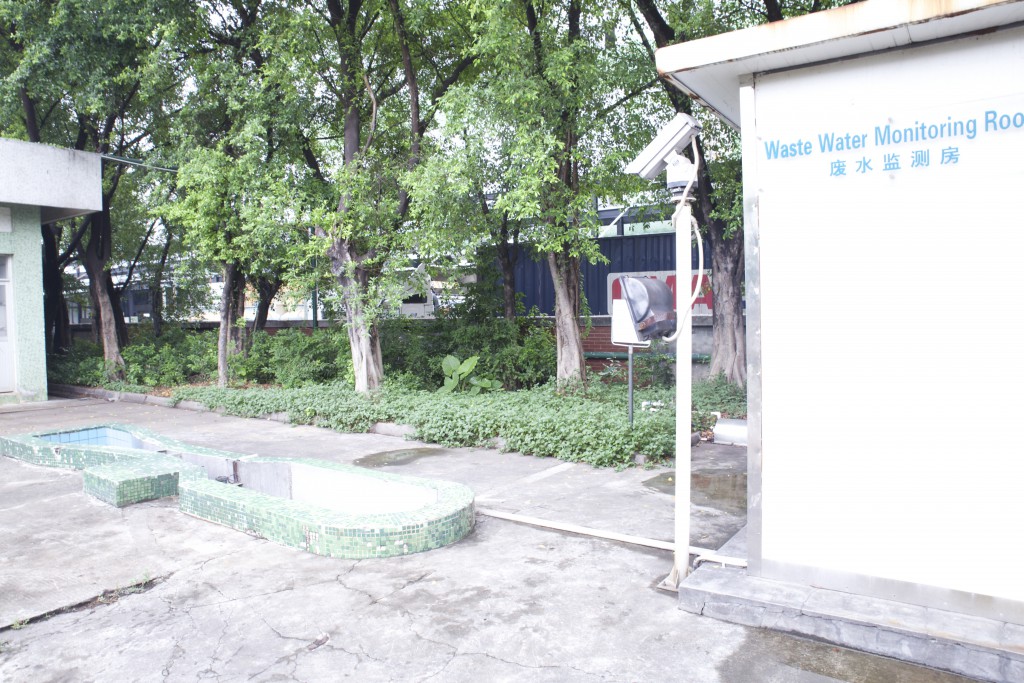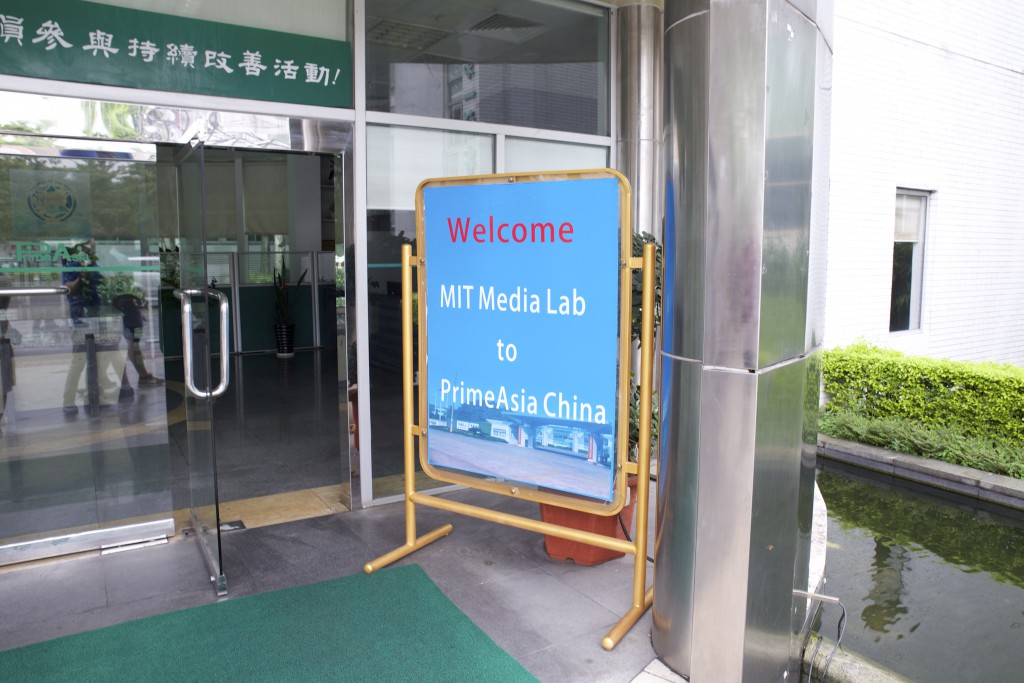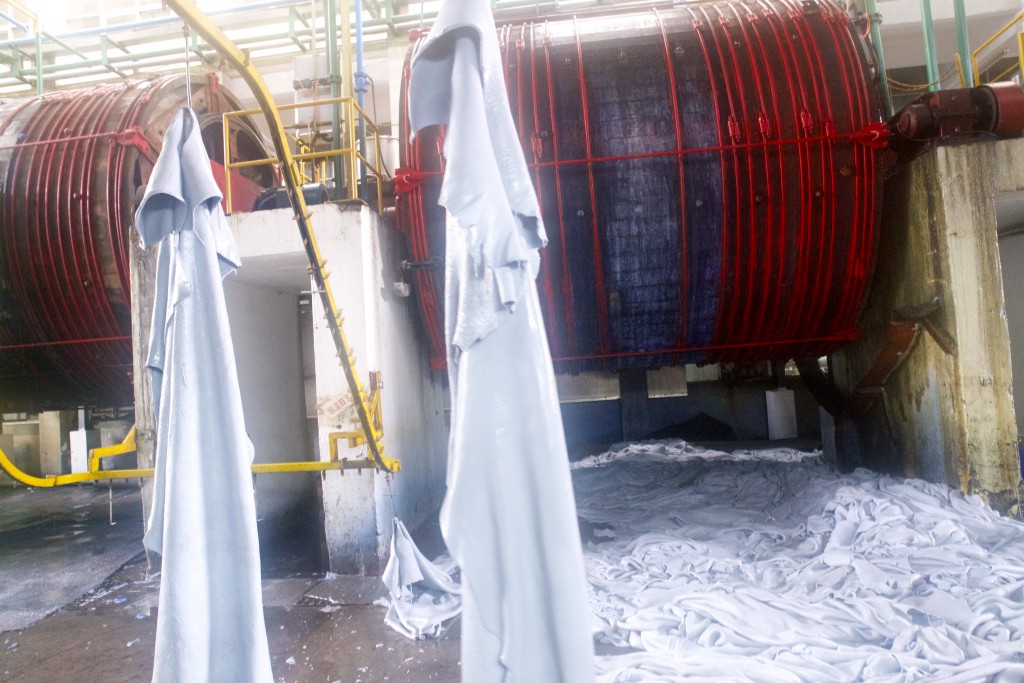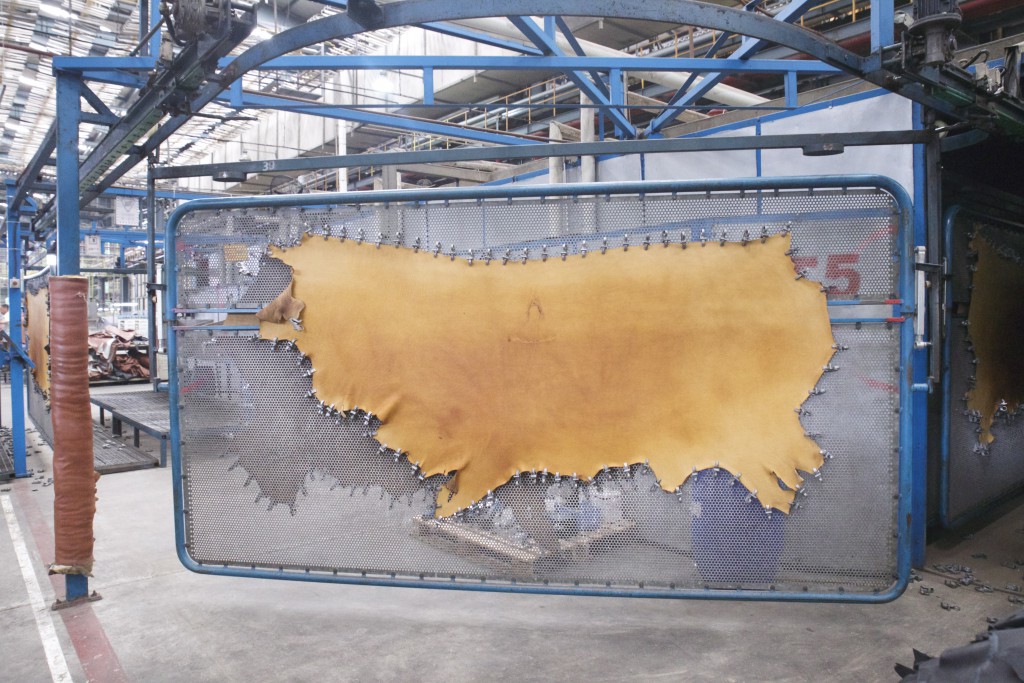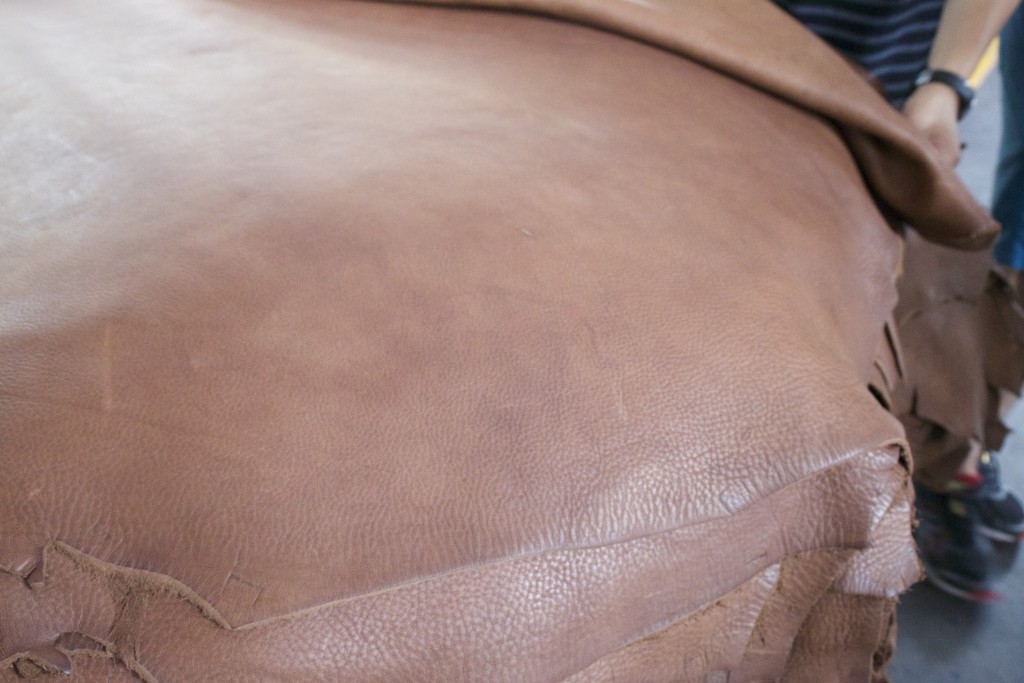by Artem Dementyev
PrimeAsia leather tannery in Dongguan. The tour was given by Sergio, one of the managers at the plant. Big thanks to Sergio for the tour. This factory converts cowhides into different types of leather. As many tanneries in South China, it is owned by Brazilians. Traditionally, Brazil has a large meat industry.
The leather manufacturing is fairly low tech and low-margin business. The essential processes remained the same for hundreds of years. Leather manufacturing is composed of three main steps: sorting, chemical processing, and physical processing (trimming, stretching).
The cowhides are the raw material for the factory. The hides are traded as a commodity, so the prices fluctuate daily. The leather tannery usually gets a few months of supplies in advance. Around 70% of supply comes from the USA, since it is the largest producer of beef. The rest come from Brazil, and Europe. The cowhides from the USA are preprocessed before the even get to the factory. They are placed in a preservative solution to avoid spoilage, and processed to remove bacteria. This preprocessing gives all the hides the characteristic blue color. All the raw hides on the tour day were preprocessed. Preprocessing is commonly done in the USA’s slaughterhouses, but not other countries, which ship just raw hides.
The bluish-colored cow hides. This is how they come in the tannery.
The hides are split into two pieces: top hide and drop split. Basically, you can get two hides from one cow. The top hide is the top part of the cow (facing outwards). The drop split is the inner layer. Top hide is used for higher quality and more expensive leather. The drop split requires more processing. For example, it is used in crocodile-skin-looking leather.
Furthermore, cowhides are separated by the number of defects. Defects such as bug bites and scars decrease the quality and subsequently require more processing. Interestingly, the cows in Brazil have more bug bites, since they are outdoors a lot. The cows in the USA have more scars, since they are confined to small enclosures, where they bump into stuff. Sergio mentioned that scars and bug bites give the leather natural look, and should not be always treated as defects.
The raw hides are tumbled with certain chemicals to give the leather its color and properties, such as waterproofing. The chemicals are the secret sauce in making the leather. For each leathery type there are different chemicals.
Small tumblers for prototyping.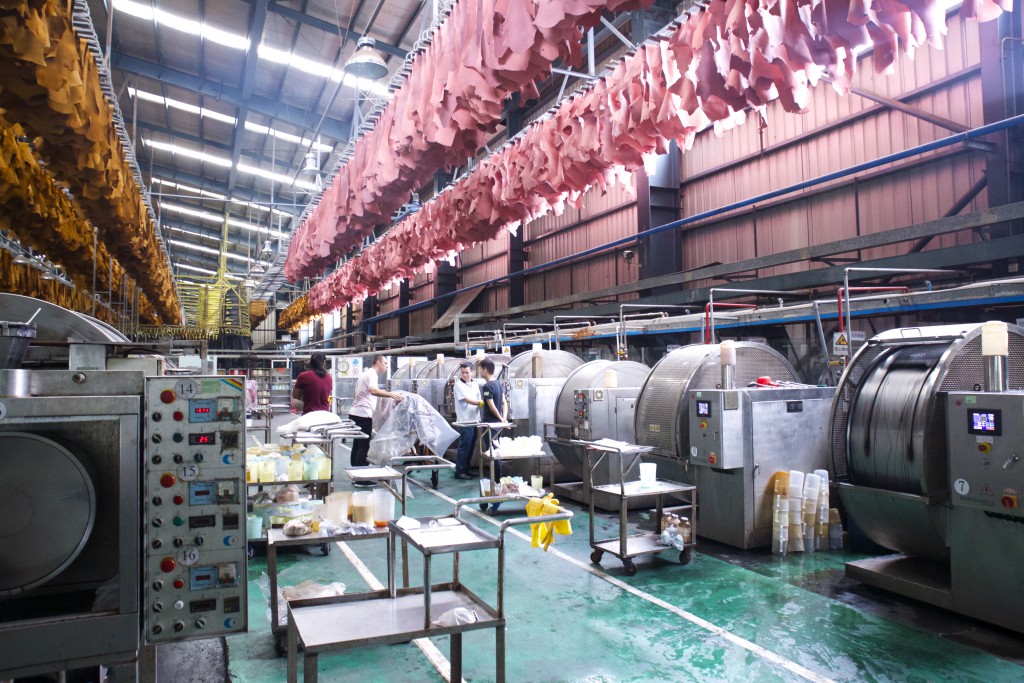
Trays of chemicals to be mixed with the hides.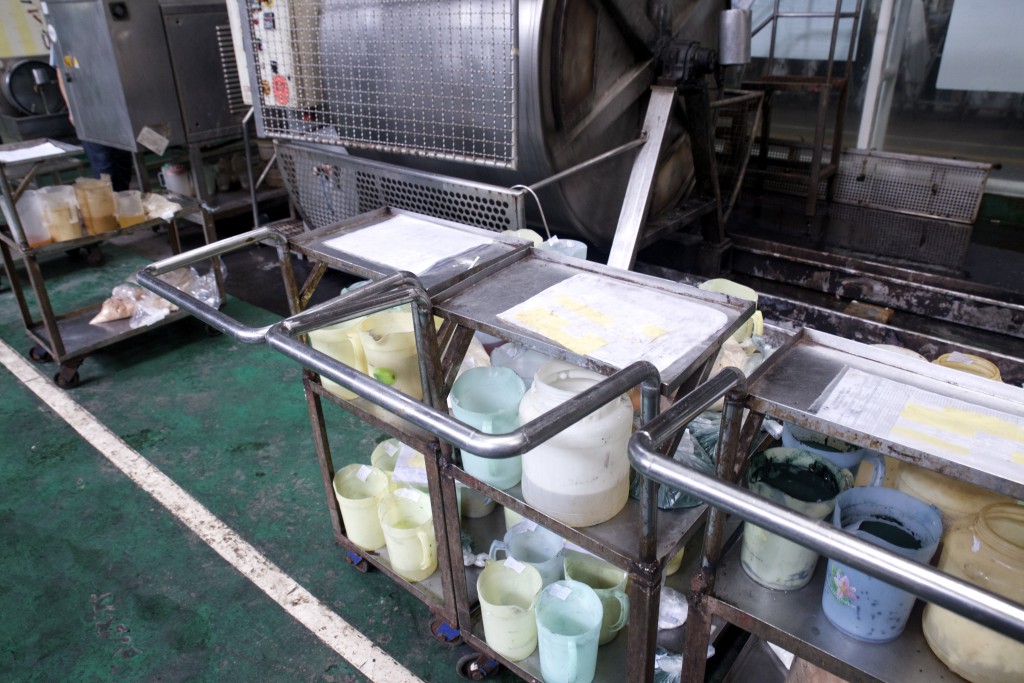
Large-scale production tumblers. The factory has a backup power generator. If the power is cut, the cowhides in the tumblers can rot. Power blackouts used to be common in Dongguan.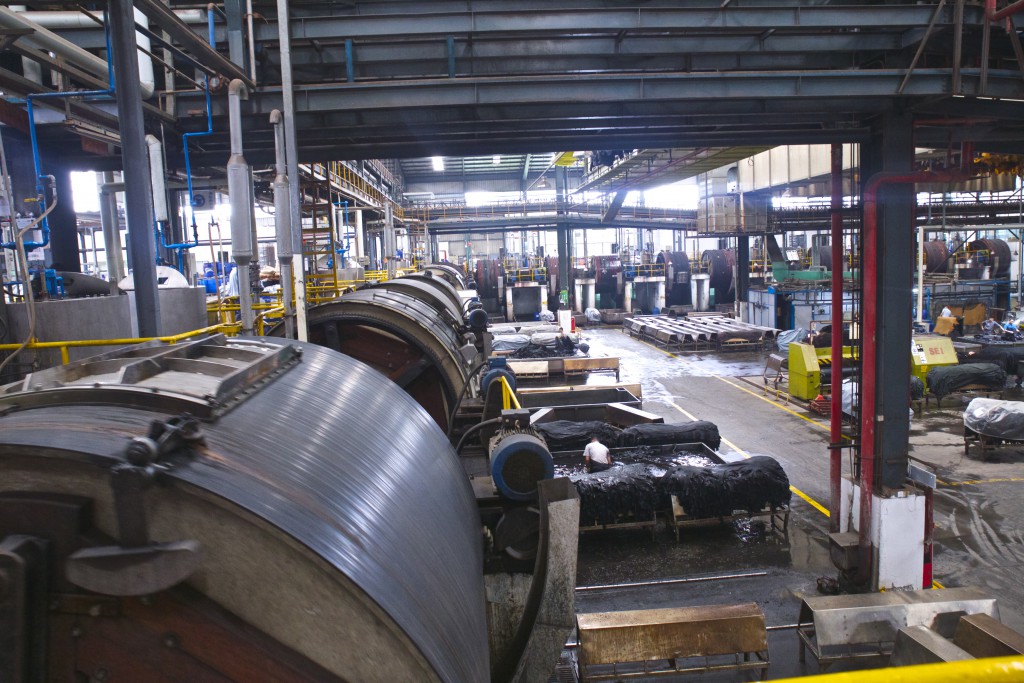
The chemical processing is much more economical in large leather quantities, since the chemicals have to be discarded after a cycle. Although the factory doesn’t have an official MLQ (minimum order quantity), they might refuse to do many multiple small runs of custom leather. Small MLQ benefits the customers, because it allows for more agile manufacturing with smaller risk. On the other hand it is wasteful for the factory. So, MLQs cause a lot of tension between the two.
After the tumblers the leather is processed further to give it’s characteristic look. Different leather requires different processes.
For example to give this leather a wrinkled look, this piece is stretched when it is drying.
Notice the characteristic wrinkles on this piece.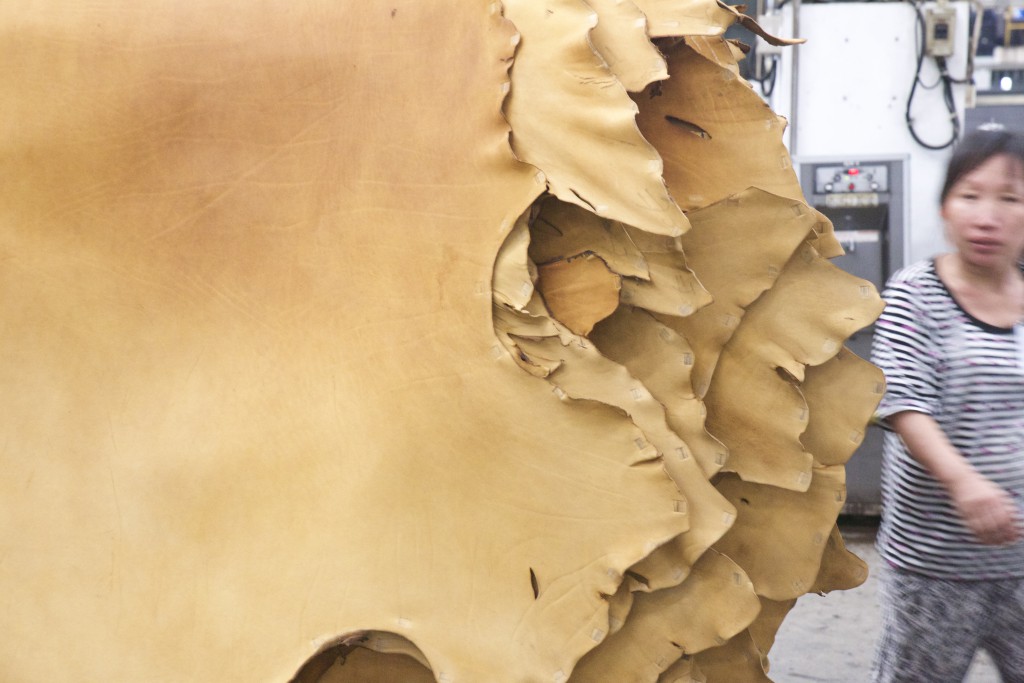
Some leather is trimmed to give it a velvet appearance. This piece was trimmed on the left side.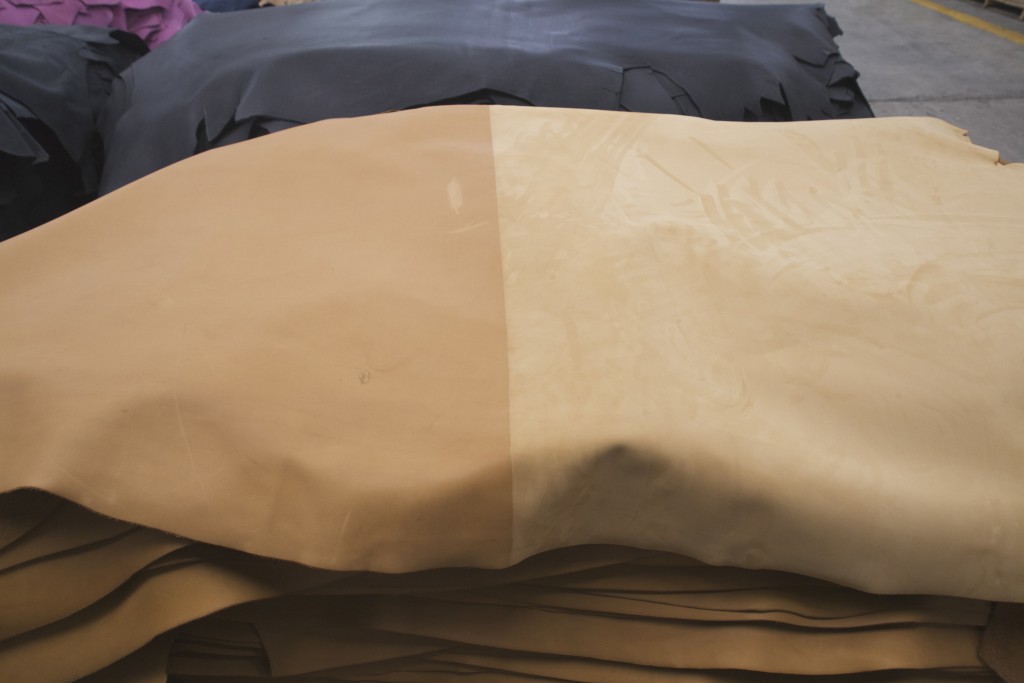
The worst quality leather is usually laminated with plastic film (e.x. crocodile skin appearance). The laminate conceals all the defects, so initial quality doesn’t matter. Here is the leather before the lamination process and after.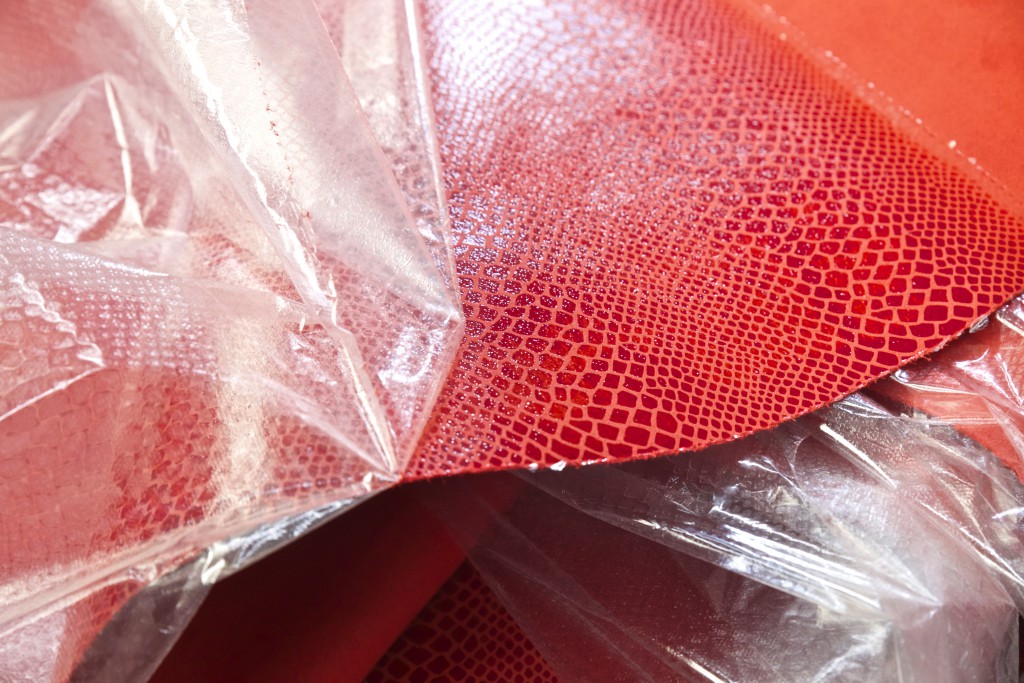
The plastic pattern is stamped with a metal die. Customers can order custom dies, for example with the company logo. Currently, many people are interested in wearable electronics, and embedding electronics in the clothing is very hard. Potentially the die can be used to stamp patterns of conductive material into the leather. For example, electrodes for capacitive touch sensors.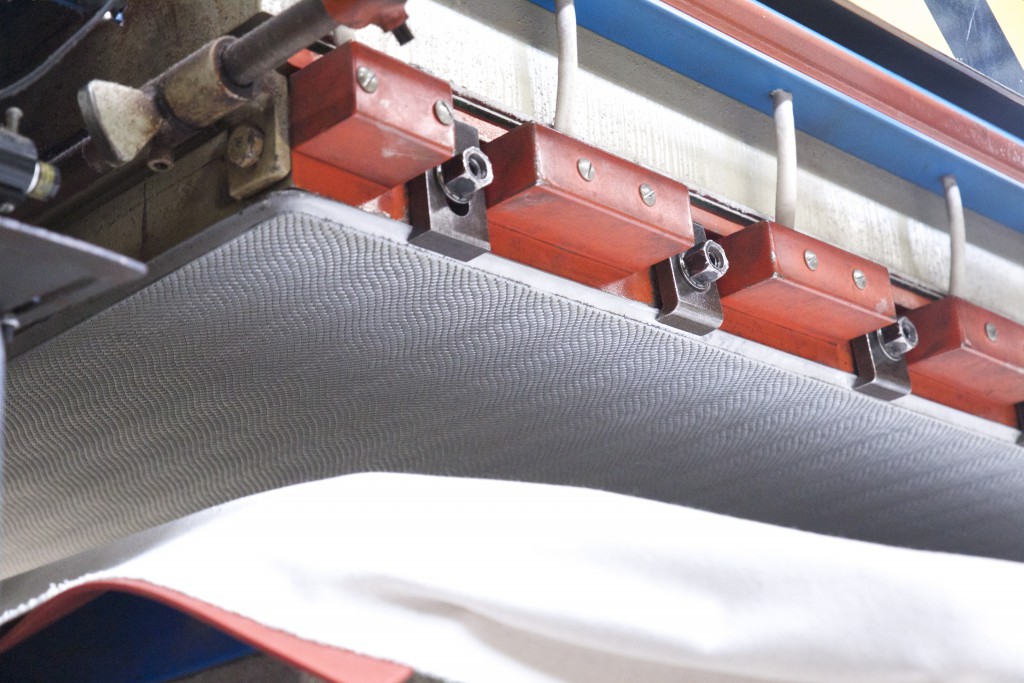
This leather is processed with waxes. The color will change if you pull on the leather, giving it an aged appearance. It is a popular look for boots and bags.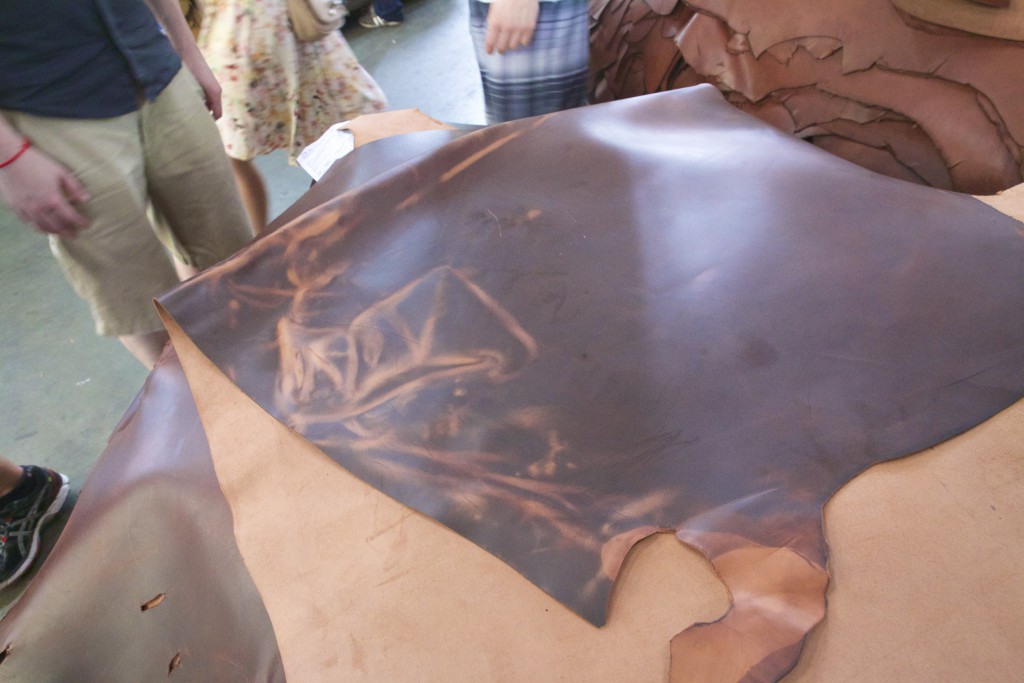
The pattern of this leather piece changes. The grain on the bottom is much larger then on the top. To make this piece into clothing item requires manual labor to match the patterns. This handcrafting makes leather an expensive material. Fake leather can be difficult to tell apart from the genuine, but the uneven grain is one thing to look for.
The factory has large onsite wastewater treatment facility. The leather factory produces a lot of waste chemicals, that need to be treated before they are returned to the river. This is one of processing pools. The bubbling is caused by bacteria, that break down the chemicals.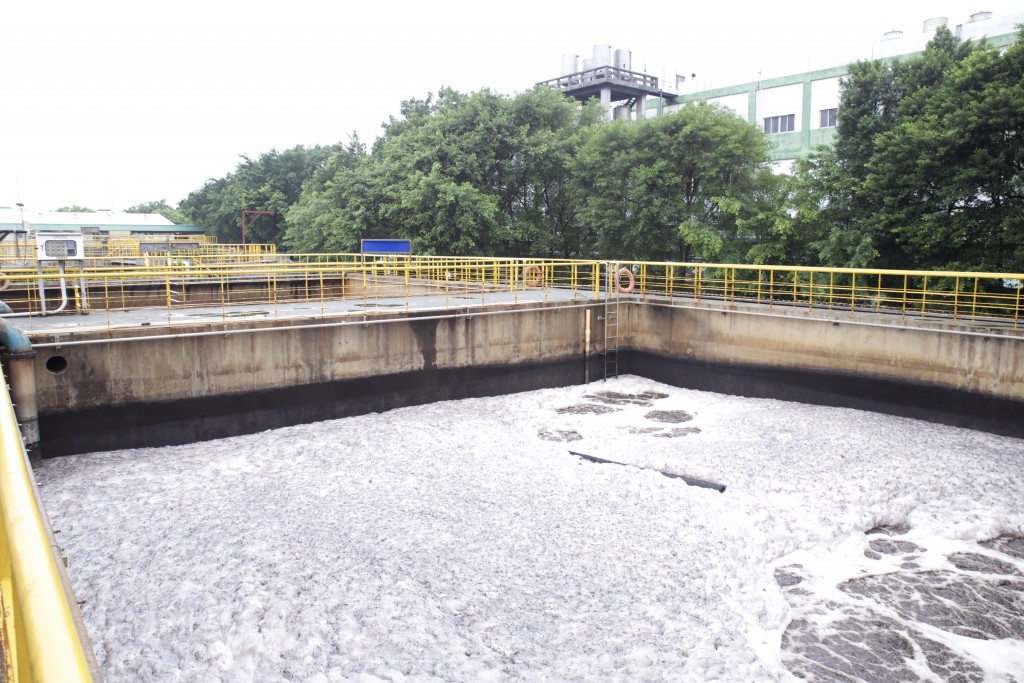
The Chinese government is monitoring the outlet of the wastewater treatment plant. A water level and other sensors are placed at the outlet. Samples are taken automatically for analysis.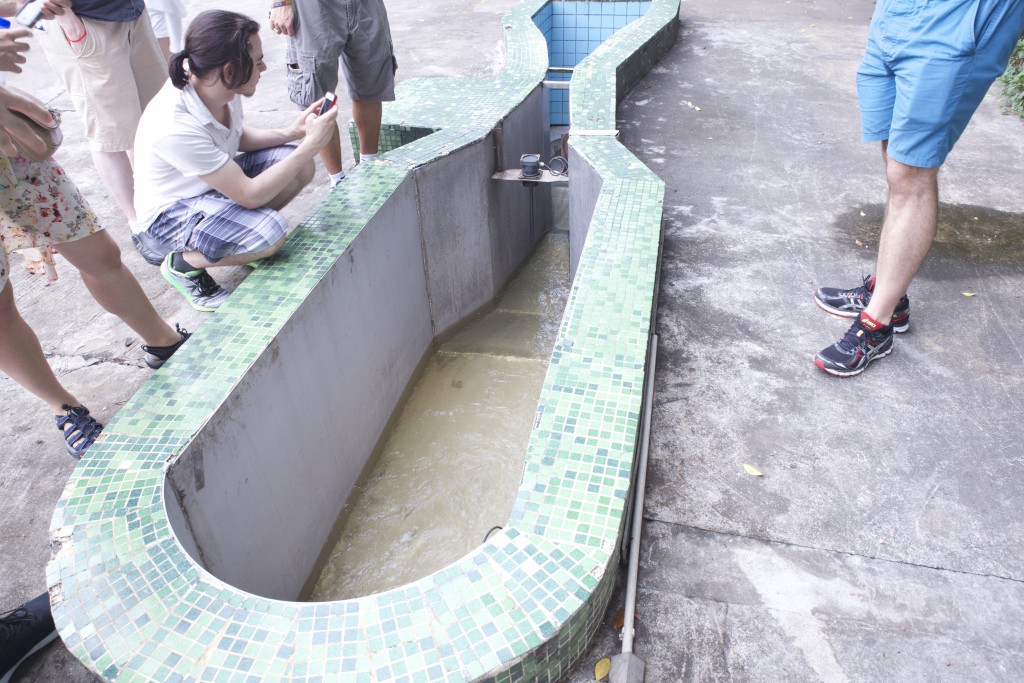
Also, to prevent tampering government-installed camera is watching the outlet. Looks like the Chinese government cares deeply about the pollution.